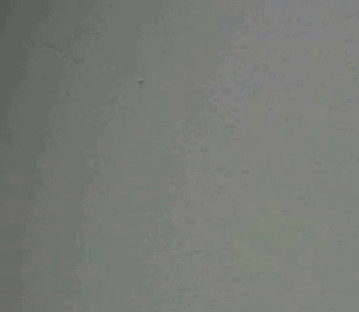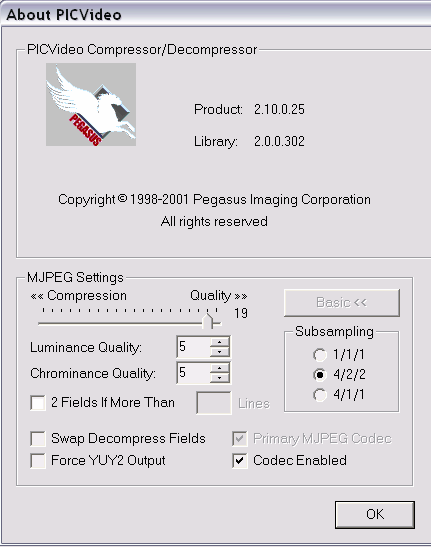| Video Editing '11 | Codecpage News |
What to use for a
simple, quick project
? There
is Windows
Movie Maker, not so
cool but it has a very intuitive user interface. Add a few scenes,
then some transitions, some titles or subtitles, anything basic
is there.
A bit awkward that transition length has to be set globally before
insertion, and the file saving procedure is even more awkward,
the real options come at the very last screen, and for any format
you need a pre-defined template.
These templates you can do yourself if you have Windows Media Encoder installed -
it comes
with a tool for that. Can be downloaded from Mocrosoft for free.
With this, you can even edit (and save) HD formats with the MovieMaker
of Windows XP. If you want some profiles for experimenting, you
can download them here
(use at your
own risk). These profiles belong into MovieMaker's program folder
under \Shared\Profiles. You can select a profile at the very last
window of the save dialogue, so don't search for them in any menus!
 |
| Fringe (gray level steps) forming due to insufficient level resolution with Windows Media "lossless" encoding |
Most important hint for successful encoding: never use CBR, always
go for quaility based VBR.
For
the occasional YouTube video,
that's all fine. But there is a problem where you'd expect it
last: You can only save videos in Windows Media format. Which
wouldn't be too bad, as there is even a template option for "lossless"
encoding that should theoretically be good for even for mastering.
But if you try to re-use any footage no matter in which quality
it was encoded, color shadings will turn into color steps or fringes
(picture),and the effect will
also worsen if you try to re-use
the footage once more. In the picture this doesn't look so nasty
but in a video these fringes are moving, producing a huge and
disturbing visual effect. Obviously, the codec hasn't learned
anything as this effect was the biggest drawback of the very first
MPEG4 codecs already that came with ancient versions of Windows
Media long ago.
Sorry, this may be good for a quick YouTube posting but not for
any real editing job even of video amateurs.
So we have to look out for something more professional.
As it happens, Magix'
line of editing
softwares seems to have reached a remarkable score of usability
as well as reliability with it's newest breed, Video Deluxe 17 HD plus (that's
what I have
tested so far. The UK/US version is named Movie Edit Pro 17 HD.
The German premium version has some more effects and a stabilizer,
but what is not advertised, the Plus version also has a quite
decent stabilizer (a bit hidden in the effects menu:
Effects/VideoObjectEffects,
or right click on the video clip in the timeline). There you'll
also find the scene recogntion. The stabilizer can't really compete
with Deshaker but may be
good for basic
jobs due to its simplicity (view some results here).
Other advantages are a full set of file formats, any kind of
professional
effects including good sound editing tools, and even an interface
for VirtualDub filters, so in addition to all the effects you
may use VirtualDub's powerful cleaning options as well.
The editing board can be switched between multi track timeline
and scene based modes, an automatic scene recognition is included
and even a per-scene editing popup, so the best features of good
ol' StudioDV are available as well.
Only drawback: MPEG2, AVC, 5.1 surround all require an activation
at first use, all separately, and you need a video containing
the stuff to start the activation. This is a serious nuisance,
as you can't just install and you're done, and the software doesn't
even tell you what you're still missing to activate.
Nevertheless, it may be worth the hassle.
The large number of
possible output formats
also enables some special tricks, for example, MPEG1 with an MPEG2-like
size and quality, good for playing it on even the oldest computer
and for integrating it seamlessly into Powerpoint presentations.
This and some other format settings (for web distribution) are
explained in
this
separate page on encoding with Magix and Riva.
Anything else you can get from the operation manual.
But a last hint may
be useful: for seamless
HD editing, especially if you don't have the most powerful CPU,
MJPEG can be a perfect intermediate and mastering format even
for large projects, at least with the good old PIC
MJPEG codec, that can save and replay
HD very quickly, compact and almost lossless (set Quality to approx.19,
see the lossless
encoding
page for some tests). Magix also has a built-in MJPEG codec
of its own, that seems to use a similar quality setting as PIC,
but PIC
is twice as
fast. To save a video with
PIC encoding,
do not use "save as mpeg" but use "save as avi"
and select PIC as the codec. PIC will always replay the videos
if installed. For the videos compressed with Magix' own MJPEG
encoder, select "swap decompress fields" in the PIC
codec settings.
Unfortunately, the PIC mjpeg codec has become a bit expensive.
If you aren't lucky enough to have an old registration, an SE
or OEM version of Studio8 or Studio9 should contain it. Installing
the software and then deleting its program folders will leave
the codec in usable condition.
Otherwise, there is a special
offer for home users. At the time this is written, the 32bit
home version is just $29, which is reasonable. Use this one, also on
64bit systems.
The codec settings can be accessed either through system settings/sounds and audio/hardware/video-codecs/properties, or e.g. in VIrtualDub under video/compression. A good mastering setting for HD may look like this:

For interlaced material (e.g. PAL HD) you should use the "2 fields if more than" setting. enter a lines number of 240, for example. Unchecking "codec enabled" will cause Videodeluxe to use it's own mjpeg again. A color subsampling better than 4/2/2 is not required as this is also what MPEG uses.
Copyright
(C) 1998-2011; all
rights reserved. All
materials in these pages are presented for scientific evaluation
of video technologies only. They may not be copied from here and
used for entertainment or commercial activities of any kind.
We do not have any relation to and do not take any responsibility
for any software and links mentioned on this site. This website
does not contain any illegal software for download. If we, at
all, take up any 3rd party software here, it's with the explicit
permission of the author(s) and regarding all possible licensing
and copyright issues, as to our best knowledge. All external download
links go to the legal providers of the software concerned, as
to our best knowledge.
Any trademarks mentioned here are the property of their owners.
To our knowledge no trademark or patent infringement exists in
these documents; any such infringement would be purely unintentional.
If you have any questions or objections about materials posted
here, please e-mail us
immediately.
You may use the information presented herein at your own risk
and responsibility only. We do also not guarantee the correctness
of any information on this site or others and do not encourage
or recommend any use of it.
One further remark: These pages are covering only some aspects
of PC video and are not intended to be a complete overview or
an introduction for beginners.